- Home
- Aer-ki Jyr
Star Force: Mak'to'ran (2)
Star Force: Mak'to'ran (2) Read online
1
July 28, 3604
Yat’ri System (Hjar’at Regional Capitol)
Inner Zone
Mak’to’ran stood inside the silver circle on the command deck of his Kafcha-class dreadnaught that outlined the zone from which mental control could be exerted as he monitored the position of every Hjar’at ship in their defense fleet while his Era’tran vessel moved through a microjump from the central star towards the 6th planet. They’d picked up an escort of some 18 warships, all of smaller size, but they were a small fraction of the overall warfleet here with Mak’to’ran being hyper aware of the threat they posed. Should they turn against him, fleeing would be his only option so he was keeping watch on every navigational twitch they made, though if his enemies had any common sense they’d wait until he arrived at his destination before acting.
He’d received assurances from Hjar’at in this system upon arriving that he’d be allowed to visit the surface of Hattoman and then leave the system again without interference, but Mak’to’ran knew better than to assume there were no threats. That said, he was still trusting the Hjar’at a great deal and was about to put himself in a very vulnerable position…but this mission was one of trust, and there were none amongst the V’kit’no’sat that held to the concept of honoring one’s word more than the Hjar’at did. Guile wasn’t their strong suit. They believed in identifying a target, charging it, destroying it, then repeating as many times as necessary…and they were just as steadfast and focused with regards to protecting their allies.
Mak’to’ran was putting them in the curious position of having to choose between him and Itaru’s orders, but Hamob had sent him here for a reason and so far it looked to be paying off, for he had half expected a fleet of ships to intercept him as soon as he entered the system. That hadn’t happened, but he still couldn’t shake the feeling that he was walking into a trap. Perhaps another fleet was on its way here to do what the Hjar’at had promised not to, but they’d made it clear that he would be allowed to leave and the wording they’d used didn’t allow for any cleverness. If they honored their word he’d have free passage, and if another race showed up and demanded they break their word the Hjar’at wouldn’t take well to that.
And given the thousands of Hjar’at warships nearby and their crews’ propensity for combat, no one was going to force their hand here. It was the thought of Hjar’at members of the ‘collective’ and possible counterparts to the I’rar’et assassins that concerned him most, but he was here and he was going to see this through one way or another.
He just hoped Hamob knew what he was doing sending him here.
When Mak’to’ran reached Hattoman he traveled down to the planet’s surface in a drop pod escorted by four Zen’zat Paklo-class starfighters under his command as 128 identical craft flown by Hjar’at Zen’zat joined up with them in an extra symbolic gesture of neutrality. Zen’zat served all V’kit’no’sat, but while they held racial allegiances they put their duty to the empire first above all else. One might think that would mean they would heed Itaru’s order to forcibly recall him, but the message here was clear. V’kit’no’sat would not be fighting V’kit’no’sat, and if any Hjar’at felt otherwise they’d have to fight the Zen’zat from both races to get at Mak’to’ran.
The Paklo stayed around his drop pod like a swarm of insects until it landed in a Hjar’at city, then they stayed in the general area flying patrol loops to make sure that everyone understood this landing pad was off limits. There were no other ships at all on the long pad that stretched out like a claw mark through the city infrastructure, far longer than it was wide, but there were several hundred Hjar’at and thousands of Zen’zat present…all of which were fully armored. The Zen’zat in their typical green/black and the Hjar’at in their reflective gold, but their Saroto’kanse’vam were uncovered and unpowered.
Those appeared as clear crystal, and while they were incredibly dense they also would gain armor protection when not energized. Their being exposed now was a sign of respect, showing that they were here to be the Era’trans’ escorts, not their attackers. Their formation was also one of defense against an exterior threat, with many having their tails towards the dropship while the inner circle focused on the visiting craft. The Zen’zat were spaced between them in tight groups that could disperse on a moment’s notice and cause all kinds of havoc…meaning that if this was a trap, there was little chance of Mak’to’ran escaping it.
When the descending ramp formed Mak’to’ran walked out first, his body armor also fully deployed into the deep red battle plates feared by many…but not the Hjar’at. The Era’tran might have an intelligence advantage given their Sav, but in physical combat they were no match for the Hjar’at. Once fully energized, the Saroto’kanse’vam not only could fire energy blasts at range, but they would glow bright blue and become cutting weapons above and beyond their already sharp shape. A Hjar’at simply had to run towards an Era’tran and ram them neck down, digging their nose into the ground and causing them to roll forward with their back spines coming around and into his face…and if they could land that attack, his shields and armor would be of little defense. He might survive once, maybe twice if he was lucky, but the damage those spines could inflict when fully energized was insane.
An Era’tran had to dodge and fire, not making physical contact, but that was difficult due to the agility advantage the Hjar’at had being quadruped. Mak’to’ran could outrun them if allowed to get up to speed, for their legs were short and stubby compared to his, but maneuvering around in close combat was to their advantage and only the deftest of Era’tran warriors could match them in the ‘dance of death,’ as it was called. In the past the two races would spar with one another for practice, with the Saroto’kanse’vam not energized, but such things had diminished with time and the lingering distrust following the Rit’ko’sor rebellion, though they had not outright ended. There were still occasionally some cross training exercises organized, so it was only mildly surprising to see a single Era’tran without armor standing amongst the Hjar’at waiting for him.
Down the ramp following Mak’to’ran came his escorts, some 23 this time and all wearing their deployed armor. Hjar’at didn’t take that as a sign of offense, rather the reverse. Most Hjar’at were warriors, and even those that were not shared some temperamental traits, so coming in with your defenses up was something of prudence rather than offense…especially given the situation. The presence of his escorts was also something that would be expected, for no warrior respected a fool.
The Era’tran waiting for him was not armored, but then again he had not been ordered to Itaru, only Mak’to’ran had, though his presence felt out of place with every other individual on the landing pad fully decked out and ready for battle if needed.
The unidentified Era’tran and a single Hjar’at approached Mak’to’ran, meeting him halfway to the inner defense circle as his own escorts fanned out, lazily exchanging glances with the Hjar’at. Neither side expected a fight, for they were fellow V’kit’no’sat, but that didn’t keep them from visually and mentally sizing each other up.
“Did you have any trouble getting here?” the other Era’tran asked.
“No I did not. Who are you?”
“I am Dagobeth, a semi-permanent ambassador to the Hjar’at.”
“Why was I unaware of this position?”
“It is a private relationship we keep,” the Hjar’at standing next to Dagobeth answered. “With traitors in the empire, we must establish who can be trusted and who cannot, and we must do so privately.”
“My arrival is hardly private,” Mak’to’ran pointed out.
“No it is not, and we have not been told the nature of your mission here, but we
will hear you out so long as you leave within 2 days. Will that be satisfactory?”
“It will.”
“Then speak.”
“You wish to do so here?” he asked, unable to see the Hjar’at’s face but with his mind partially visible as the Era’tran tried to glean some clues as to his reasoning.
“Those who need to know are watching. Why have you come here?”
Mak’to’ran looked at the clear spines that were at his eye level, then down to the much lower head of the Hjar’at.
“Very well. I bring information concerning the Star Force Hadarak.”
“Information you withheld from Itaru?”
“No. Information recently obtained during a reconnaissance mission to the star systems where they keep the Hadarak.”
“No such mission was mandated. You defy Itaru again?”
“Necessarily so. We not only have traitors amongst us, but we have powerful enemies on the rim that we have not been warned of, and they are allied with this Star Force. One of our scout ships was destroyed by a race we have not encountered before, and I have come here to give you the information on our new enemies and consult with you concerning the implications as I simultaneously release the information to the Urrtren.”
“What kind of enemy?”
“One with technology that we cannot fully identify, and one with a stealth field that our sensors cannot penetrate.”
The Hjar’at growled and a single lightning flash of energy passed between two of his highest spines, but they remained clear and the discharge did not occur a second time.
“How many did you lose?”
“A Domjo. We sent 6, and they were able to complete their mission. The altered Hadarak appear to be prototypes only. There are no duplicates. However, the location of the Hadarak is also a meeting place for many advanced races that we have no knowledge of. We engaged in combat only with the one, but there are many more. Whoever is behind the treachery of this Star Force appears to be recruiting powerful allies from the rim as well. Races that we should have heard something about previously, but Itaru has not given any such warnings. If they will not defend the V’kit’no’sat, then others must. If Itaru begins acquitting its duty I will obey its edicts, but until such a time loyal V’kit’no’sat have a great deal of work to do.”
The Hjar’at looked at Dagobeth, then tilted his head away from the drop pod.
“Bring your data,” he said, spinning around and walking into a forming gap in those assembled that led to a city entrance.
He is rattled, Dagobeth told Mak’to’ran telepathically. And I am not at all pleased either.
None of us are, Mak’to’ran said as he fell into step with the unarmored Era’tran and followed the Hjar’at. His escorts slipped into a mirroring 2 wide formation save for a trio that stayed behind with the drop pod that the starfighters were still circling over and would remain so for the duration of his visit, cycling in and out as needed.
As they walked the shorter distance to the side of the landing pad, Mak’to’ran looked up at the sea of ridges that the Hjar’at made their cities out of. They weren’t totally smooth, but a far cry from the spines on their backs. Rather these buildings were a massive arc that tapered out all the way to the ground but were narrow on the sides, making them almost look like the back fin of a Qua’cho. These were thicker than that, but the entire Hjar’at city was covered with them in a way that led to easy travel laterally on the streets between the small, artificial mountains, but try and travel across them and it became very frustrating.
One could travel down to the low end and move around there, but that was extremely inefficient. For some reason the Hjar’at didn’t seem to care, though they had installed access ports to allow people to cut through the center of the ridges and the entrance they were currently headed for looked to qualify as one. It was located at the very bottom of a steep slope and was large enough to accommodate small ships. It was closed until they came within 200 meters of it, then the huge door started to pull down from a narrow opening on the top until it descended all the way into the ground, allowing them yet again an inconvenient access.
But Mak’to’ran knew the reason they’d designed it that way. ‘Slow to open, quick to close’ was a combat necessity allowing them to block off open access ways quickly to ground travel. Aerial traffic, if it was allowed inside, could still pass through and would be the easiest and quickest to open up for, but if there were troops on the ground they could be stopped quickly, for that was where the door would extrude from first.
In fact, nearly all Hjar’at infrastructure was predicated on combat of some sort, and the ridge-like buildings were the hardest V’kit’no’sat structures to take out from orbit due to their shape. Hit them on the ridge and you’d encounter extra dense shielding, but miss slightly and hit them on the flanks and you’d encounter a sloped shield that would spread out the damage, thus making them soak up more attack power and delay an enemy’s destruction of the city.
And if one building was destroyed from the ground, the next one over would essentially be a giant shielded wall hard to get through, forcing an enemy into the predictable choke points between them that had concealed weaponry and long roads leading up to them that the Hjar’at could charge down and ram their targets.
This entirely cityscape was set up for their preferred combat if they were ever invaded, and while Mak’to’ran respected that he also knew that he would have little room to dodge in the relatively narrow roads between the ridges, setting himself up for easy rams by a group of Hjar’at if it came to that, for all they would have to do is stand shoulder to shoulder and run, with him having nowhere to go.
The ‘bladed wall’ is what they called the technique, and unless you were a good jumper there was little you could do to avoid it in infrastructure such as this. While all V’kit’no’sat had Lachka, most were not powerful enough to slow, let alone stop a charging Hjar’at. You could do so in groups working together, but the only ones rumored to be powerful enough to accomplish it solo were the Oso’lon, and Mak’to’ran still had doubts about the veracity of those rumors.
When they passed through the gate they entered the inside of the ridge-like building and immediately all the Era’tran felt a little too tall. The ceiling was still well above their head height, but it was low compared to the way everything was spread out laterally. There were no corridors and rooms like most other V’kit’no’sat races utilized, but rather a wide open plain interrupted with support columns and sporadic walls. You couldn’t see everywhere, for there was enough stuff to block your distant vision, but if combat were to break out inside the structure the Hjar’at would have decent running space to get up to ramming speed and the low ceiling height would force flyers down to spine level.
Mak’to’ran assumed the same for the other levels all the way up to the top of the structure, but his Hjar’at escorts led them through the building and out the far side, crossing the street and turning to the right. They walked down it with a few vehicles passing by over their heads then turned left and entered the next ridge. They didn’t have gates facing one another, so the problem of moving across ridges was a tedious one until they came to the Hjar’at version of a Satu. They walked into a circular end of one of the streets and were immediately pulled upwards a few at a time.
Mak’to’ran walked in next to Dagobeth and the pair were lifted up through a short shield column until they were deposited on a shield platform. There was no physical structure to it at all, and it led to a series of river-like paths that meandered rather than moved on straight lines. That was annoying as far as distance traveled was, but for someone trying to shoot a passenger on the Satu the constant twists and turns would make their path unpredictable, especially considering that the shield path ahead of them was nonexistent until they came near to it, with the invisible road forming and deconstructing behind them as they were carried up and over the ridge buildings.
The Hjar’at had built their Satu infrastructu
re in such a way that they could turn it on and off at will, thus making it impossible to destroy with an aerial attack or orbital bombardment unless the emitters in the well protected buildings below were hit. Had Mak’to’ran not been wearing armor he would have been concerned, for a saboteur could cut out his section of the Satu and drop him more than half a mile to the ground.
That might kill him, then again he might survive or die in such a way to be recoverable after, but his armor made the matter pointless. All V’kit’no’sat armor had limited gravity drives installed that were just powerful enough to lift his body. He couldn’t use them to fly in any appreciable way, but if he fell they would slow his fall and avoid any danger. Likewise, if he was trapped in a pit he couldn’t climb out of, he could jump and with the help of his armor attain sufficient speed in order to get out before the power charge diminished.
It was a backup that was rarely used, but necessary. Even the Zen’zat had it, and if they wished they could glide across great distances as they slowly fell, but few were skilled enough to truly make use of that. The legendary Ironsey had been a master of it, but sadly that Zen’zat had been killed shortly before Mak’to’ran had been born…as had many more during the Zak’de’ron war. Numbers could be replenished with new births, but experience was far harder to replicate. A million years worth of training took a million years to replace, and the strength that the V’kit’no’sat had had during the days of the Zak’de’ron had not been fully recovered in terms of personnel.
And losing even more to something as pathetic as falling from a Satu was beyond unacceptable, which was why warriors chose to wear their armor in almost all occasions, for even in undeployed mode the antigrav would function, and there were many other V’kit’no’sat civilian accoutrements that offered the same protection.
But this Satu design also held another purpose, and that being that an enemy couldn’t make use of it…for the Hjar’at would just turn it off if they did and force them to move through the streets and find some way to get by their Saroto’kanse’vam.

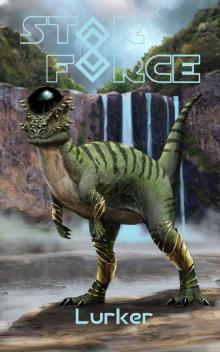 Lurker
Lurker Whitmore Day
Whitmore Day Uriti Tamer
Uriti Tamer The Powers That Be
The Powers That Be Star Force: Captains Mint (Star Force Universe Book 70)
Star Force: Captains Mint (Star Force Universe Book 70) Point Zero
Point Zero Star Force: Temple Wars
Star Force: Temple Wars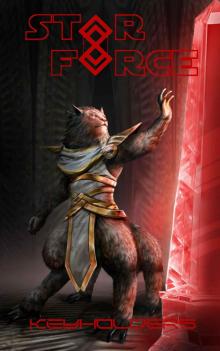 Star Force: Keyholders (Star Force Universe Book 61)
Star Force: Keyholders (Star Force Universe Book 61) Enlightenment
Enlightenment Star Force: Legacy of the Ancients (Star Force Universe Book 59)
Star Force: Legacy of the Ancients (Star Force Universe Book 59) First Contact Fallout
First Contact Fallout Star Force- Atonement
Star Force- Atonement Carnage
Carnage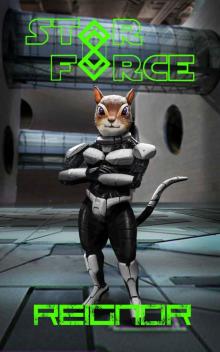 Reignor
Reignor Blood on the Stars
Blood on the Stars Star Force: Death Mark (Star Force Universe Book 67)
Star Force: Death Mark (Star Force Universe Book 67) Star Force: Galactic Empire Revealed (Star Force Universe Book 63)
Star Force: Galactic Empire Revealed (Star Force Universe Book 63) Vargemma
Vargemma Maty
Maty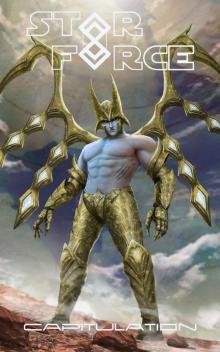 Star Force: Capitulation (Star Force Universe Book 73)
Star Force: Capitulation (Star Force Universe Book 73) Star Force: Phoenix (Star Force Universe Book 62)
Star Force: Phoenix (Star Force Universe Book 62) Star Force: Atonement (Star Force Universe Book 68)
Star Force: Atonement (Star Force Universe Book 68) Death Mark
Death Mark Star Force: Penance (SF49)
Star Force: Penance (SF49) Star Force: Headstrong (SF72)
Star Force: Headstrong (SF72)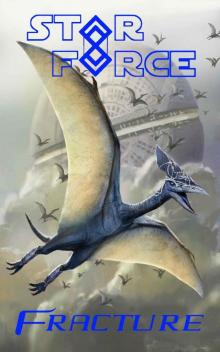 Star Force: Fracture (Star Force Universe Book 47)
Star Force: Fracture (Star Force Universe Book 47) Star Force: Eviction (SF33)
Star Force: Eviction (SF33)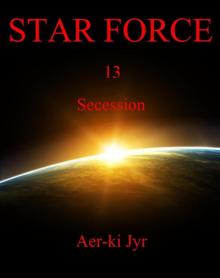 Star Force: Secession (SF13)
Star Force: Secession (SF13)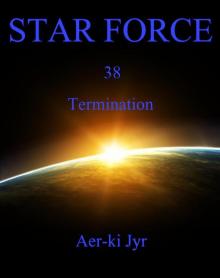 Star Force: Termination (SF38)
Star Force: Termination (SF38) Star Force: Origin Series Box Set (1-4)
Star Force: Origin Series Box Set (1-4) Gateways
Gateways Star Force: Reclamation (SF91) (Star Force Origin Series)
Star Force: Reclamation (SF91) (Star Force Origin Series) Star Force: Excalibur (Star Force Universe Book 41)
Star Force: Excalibur (Star Force Universe Book 41) Star Force: Symbiosis (Star Force Universe Book 72)
Star Force: Symbiosis (Star Force Universe Book 72) Star Force: Origin Series Box Set (25-28)
Star Force: Origin Series Box Set (25-28)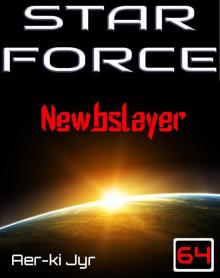 Star Force: Newbslayer (SF64)
Star Force: Newbslayer (SF64) Star Force: Leonidas (SF96) (Star Force Origin Series)
Star Force: Leonidas (SF96) (Star Force Origin Series) Star Force: Origin Series Box Set (9-12)
Star Force: Origin Series Box Set (9-12) Star Force: Ysalamir (Star Force Universe Book 54)
Star Force: Ysalamir (Star Force Universe Book 54) Star Force: Starchaser (SF69)
Star Force: Starchaser (SF69) Star Force: Inception (SF1)
Star Force: Inception (SF1)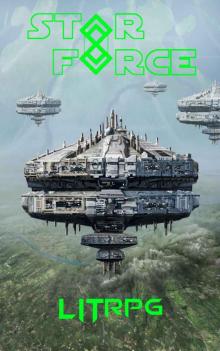 Star Force: LITrpg (Star Force Universe Book 64)
Star Force: LITrpg (Star Force Universe Book 64) Star Force: Psionics (SF29)
Star Force: Psionics (SF29) Star Force: Essence (Star Force Universe Book 51)
Star Force: Essence (Star Force Universe Book 51) Star Force: Clash of the Demigods (Star Force Universe Book 60)
Star Force: Clash of the Demigods (Star Force Universe Book 60) Star Force: Zen'zat (SF14)
Star Force: Zen'zat (SF14) Star Force: Ice Queen
Star Force: Ice Queen Metamorphosis
Metamorphosis Star Force: Revision (SF78)
Star Force: Revision (SF78) Star Force: Recalibration (SF30)
Star Force: Recalibration (SF30) Star Force: Rajamal (SF97) (Star Force Origin Series)
Star Force: Rajamal (SF97) (Star Force Origin Series) Star Force: Evasion (Wayward Trilogy Book 2)
Star Force: Evasion (Wayward Trilogy Book 2) Star Force: Mastermind (SF32)
Star Force: Mastermind (SF32) Star Force: Excursion (SF46)
Star Force: Excursion (SF46) Star Force: Deception (SF11)
Star Force: Deception (SF11) Star Force: Cascade (SF73)
Star Force: Cascade (SF73) Star Force Perseverance (SF81) (Star Force Origin Series)
Star Force Perseverance (SF81) (Star Force Origin Series) Star Force: Paladin (SF94) (Star Force Origin Series)
Star Force: Paladin (SF94) (Star Force Origin Series) Star Force: Revelation (SF79)
Star Force: Revelation (SF79) Star Force: Bloodlust (SF54)
Star Force: Bloodlust (SF54) Star Force: Instinct (Star Force Universe Book 49)
Star Force: Instinct (Star Force Universe Book 49) Star Force: Intimidation (SF17)
Star Force: Intimidation (SF17) Star Force: Capitulation (SF95) (Star Force Origin Series)
Star Force: Capitulation (SF95) (Star Force Origin Series) Star Force: Collaboration (SF90) (Star Force Origin Series)
Star Force: Collaboration (SF90) (Star Force Origin Series) Star Force: Mak'to'ran (4)
Star Force: Mak'to'ran (4)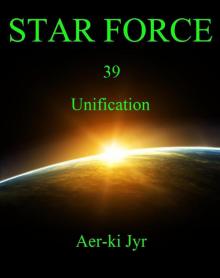 Star Force: Unification (SF39)
Star Force: Unification (SF39) Star Force: Origin Series Box Set (37-40)
Star Force: Origin Series Box Set (37-40) Star Force: Fabrication (SF7)
Star Force: Fabrication (SF7) Star Force: Marauders (SF63)
Star Force: Marauders (SF63) Star Force: Ringworld (SF80)
Star Force: Ringworld (SF80) Star Force: Earth Evacuation
Star Force: Earth Evacuation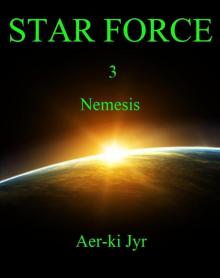 Star Force: Nemesis (SF3)
Star Force: Nemesis (SF3) Star Force: Ambrosia (SF6)
Star Force: Ambrosia (SF6)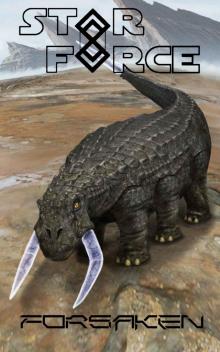 Star Force_Forsaken
Star Force_Forsaken Star Force: Return to Earth
Star Force: Return to Earth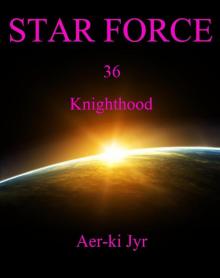 Star Force: Knighthood (SF36)
Star Force: Knighthood (SF36) Star Force: Bahamut (SF86) (Star Force Origin Series)
Star Force: Bahamut (SF86) (Star Force Origin Series) Star Force: Integration (SF2)
Star Force: Integration (SF2) Star Force: Benefactor (SF19)
Star Force: Benefactor (SF19) Star Force: Revulsion (SF70)
Star Force: Revulsion (SF70) Star Force: Divide (SF76) (Star Force Origin Series)
Star Force: Divide (SF76) (Star Force Origin Series) Star Force: Scorpion (Star Force Universe Book 42)
Star Force: Scorpion (Star Force Universe Book 42)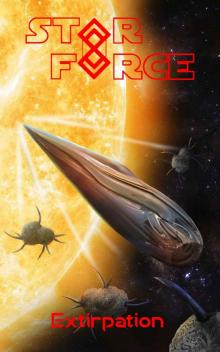 Star Force: Extirpation (Star Force Universe Book 56)
Star Force: Extirpation (Star Force Universe Book 56) Star Force: Shiva (SF98) (Star Force Origin Series)
Star Force: Shiva (SF98) (Star Force Origin Series) Star Force: Origin Series Box Set (5-8)
Star Force: Origin Series Box Set (5-8) Star Force: Disarmament (SF10)
Star Force: Disarmament (SF10)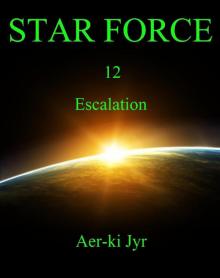 Star Force: Escalation (SF12)
Star Force: Escalation (SF12) Star Force: Nexus (SF57)
Star Force: Nexus (SF57) Star Force: Gemini (SF5)
Star Force: Gemini (SF5)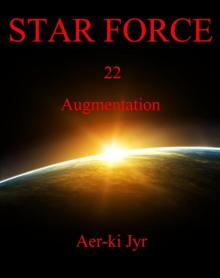 Star Force: Augmentation (SF22)
Star Force: Augmentation (SF22) Star Force: Mettle (SF9)
Star Force: Mettle (SF9) Star Force: Rammus (SF83) (Star Force Origin Series)
Star Force: Rammus (SF83) (Star Force Origin Series) Star Force: Mantle (SF92) (Star Force Origin Series)
Star Force: Mantle (SF92) (Star Force Origin Series) Star Force: Perquisition
Star Force: Perquisition Star Force: Upgrades (SF41)
Star Force: Upgrades (SF41) Star Force: Rift
Star Force: Rift Star Force: Mak'to'ran (5)
Star Force: Mak'to'ran (5) Star Force: Consensus (SF43)
Star Force: Consensus (SF43) Star Force: Ascension (SF27)
Star Force: Ascension (SF27) Star Force: Axius (SF47)
Star Force: Axius (SF47) Star Force: Canderous (SF16)
Star Force: Canderous (SF16) Star Force: Insurrection (SF28)
Star Force: Insurrection (SF28) Star Force: Mak'to'ran (1)
Star Force: Mak'to'ran (1) Star Force: Backstab (SF23)
Star Force: Backstab (SF23) Star Force: Hamoriti (SF62)
Star Force: Hamoriti (SF62)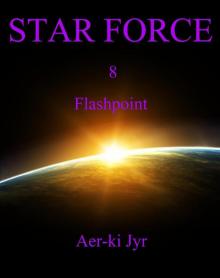 Star Force: Flashpoint (SF8)
Star Force: Flashpoint (SF8) Star Force: Aquatics (SF31)
Star Force: Aquatics (SF31) Star Force: Divergent (SF74)
Star Force: Divergent (SF74) Star Force: Origin (SF24)
Star Force: Origin (SF24) Star Force 75: Resistance
Star Force 75: Resistance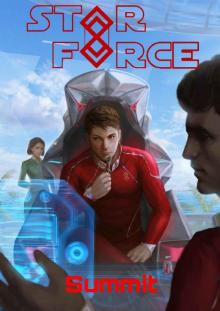 Star Force: Summit (Star Force Universe Book 44)
Star Force: Summit (Star Force Universe Book 44) Star Force: Baron (Star Force Universe Book 43)
Star Force: Baron (Star Force Universe Book 43) Star Force: Mak'to'ran (2)
Star Force: Mak'to'ran (2) Star Force: Trials (SF68)
Star Force: Trials (SF68) Star Force: Origin Series Box Set (13-16)
Star Force: Origin Series Box Set (13-16) Star Force: Persistent Ravage (Wayward Trilogy Book 3)
Star Force: Persistent Ravage (Wayward Trilogy Book 3) Star Force: Kaalo (SF99) (Star Force Origin Series)
Star Force: Kaalo (SF99) (Star Force Origin Series)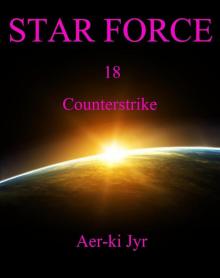 Star Force: Counterstrike (SF18)
Star Force: Counterstrike (SF18) Star Force: Foothold (SF25)
Star Force: Foothold (SF25) Star Force: Sav (SF51)
Star Force: Sav (SF51) Star Force: Veracious (SF48)
Star Force: Veracious (SF48) Star Force: Allegiance (SF21)
Star Force: Allegiance (SF21) Star Force: Resistance (SF75)
Star Force: Resistance (SF75) Star Force: Deceit (SF34)
Star Force: Deceit (SF34) Star Force: Lost Destiny (Wayward Trilogy Book 1)
Star Force: Lost Destiny (Wayward Trilogy Book 1)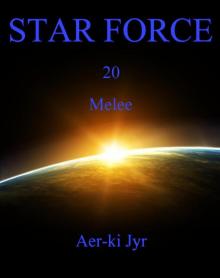 Star Force: Melee (SF20)
Star Force: Melee (SF20) Star Force: Crusade (SF93) (Star Force Origin Series)
Star Force: Crusade (SF93) (Star Force Origin Series) Star Force: Scruples (SF37)
Star Force: Scruples (SF37) Star Force: Trailblazer (SF4)
Star Force: Trailblazer (SF4)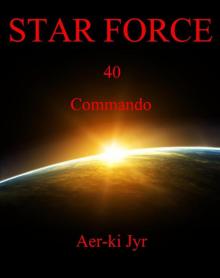 Star Force: Commando (SF40)
Star Force: Commando (SF40) Star Force: Retribution (SF60)
Star Force: Retribution (SF60) Star Force: Relocation (SF44)
Star Force: Relocation (SF44) Star Force: Dominance (Star Force Universe Book 50)
Star Force: Dominance (Star Force Universe Book 50) Star Force: Death Knell (SF26)
Star Force: Death Knell (SF26) Apex
Apex Star Force: Paradigm (SF35)
Star Force: Paradigm (SF35) Star Force: Origin Series (17-20)
Star Force: Origin Series (17-20) Star Force: Mak'to'ran (3)
Star Force: Mak'to'ran (3) Star Force: Colonization (SF15)
Star Force: Colonization (SF15)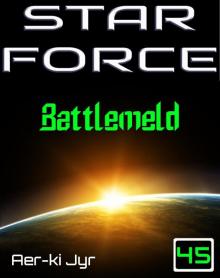 Star Force: Battlemeld (SF45)
Star Force: Battlemeld (SF45) Star Force: Intransigent (SF100) (Star Force Origin Series)
Star Force: Intransigent (SF100) (Star Force Origin Series) Star Force: Shame (SF59)
Star Force: Shame (SF59) Star Force: Origin Series Box Set (33-36)
Star Force: Origin Series Box Set (33-36) Star Force: Zealot (SF87) (Star Force Origin Series)
Star Force: Zealot (SF87) (Star Force Origin Series) Star Force: The Admiral
Star Force: The Admiral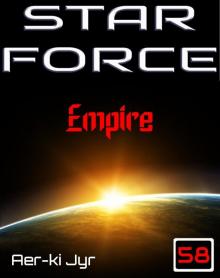 Star Force: Empire (SF58)
Star Force: Empire (SF58) Star Force: Origin Series Box Set (29-32)
Star Force: Origin Series Box Set (29-32) Star Force 82 Hradeiti (SF82) (Star Force Origin Series)
Star Force 82 Hradeiti (SF82) (Star Force Origin Series) Star Force: Forsaken (Star Force Universe Book 48)
Star Force: Forsaken (Star Force Universe Book 48) Star Force: Origin Series Box Set (21-24)
Star Force: Origin Series Box Set (21-24) Star Force: Resurrection (SF84) (Star Force Origin Series)
Star Force: Resurrection (SF84) (Star Force Origin Series)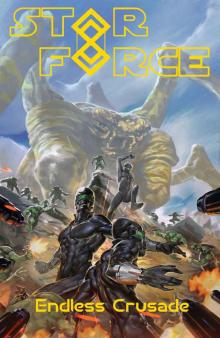 Star Force: Endless Crusade
Star Force: Endless Crusade Star Force: The Dinosaur War (Star Force Universe Book 45)
Star Force: The Dinosaur War (Star Force Universe Book 45) Star Force: Quenar (SF88) (Star Force Origin Series)
Star Force: Quenar (SF88) (Star Force Origin Series) Star Force: Intellect (SF85) (Star Force Origin Series)
Star Force: Intellect (SF85) (Star Force Origin Series) Star Force: Resolution (SF89) (Star Force Origin Series)
Star Force: Resolution (SF89) (Star Force Origin Series) Star Force: Probe (SF42)
Star Force: Probe (SF42)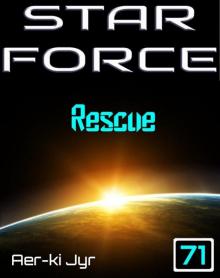 Star Force: Rescue (SF71)
Star Force: Rescue (SF71) Star Force: Evacuation (SF50)
Star Force: Evacuation (SF50) Star Force: Survivor (SF52)
Star Force: Survivor (SF52)